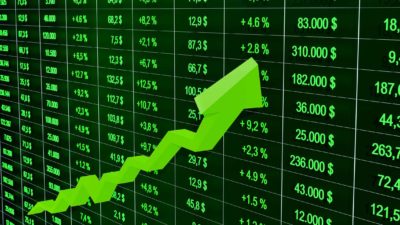The Nasdaq Composite Index (NASDAQ: IXIC) hit another new record high yesterday (overnight Aussie time). The tech-heavy index closed up 0.7%. That's up 23% year-to-date and 63% from its March 23 low.
More remarkably, yesterday the S&P 500 Index (INDEXSP: INX), which had yet to fully recover from its COVID-19 selloff, hit its own new record. The S&P 500 gained 0.2%. Year-to-date that's a gain of 4.0%. And it's up 51.5% from the March 23 low.
Australian shares are gaining too. In today's trade the S&P/ASX 200 Index (ASX: XJO) is up 0.9%. That's still down 13.7% from its 20 March all-time high. But the top 200 companies on the ASX have now gained an average 34.7% since March 23.
Leading the charge on the ASX 200 today is WiseTech Global Ltd (ASX: WTC).
The WiseTech share price is up 33% in late afternoon trading following the release of its 2020 financial year results. WiseTech reported its revenue was up 23% and earnings before interest, taxes, depreciation and amortisation (EBITDA) leapt 17%.
What these 4 market experts are saying about rocketing share prices
Indeed, the pace of recovery since the March lows has been sizzling, with many companies seeing their share prices double, or more.
Market analysts are almost unanimously pointing to record low interest rates as the primary driver for the rapid rebound.
Here's what 4 leading market analysts have to say about share prices, as quoted by Bloomberg:
Jonathan Krinsky, chief market technician at Bay Crest Partners, commented:
While a new all-time closing high would certainly be encouraging, it's not always the pedal to the metal trade that it would seem. There is lot of optimism out there, which often makes breakouts harder to sustain.
Tobias Levkovich, chief US equity strategist at Citigroup, wrote in a note last week:
Takeaways from discussions with institutional investors indicate significant comfort with central banks' willingness to keep rates low for an extended period. This is a marked shift from commentary heard a month or two ago and reflects both complacent/ebullient investor sentiment and a sense of rationalization for the relentless bull run.
Goldman Sachs' David Kostin (who recently lifted his 2020 target for the S&P 500 by 20% to 3,600) wrote in a note:
Share prices reflect not just the expected future stream of earnings but also the rate at which the profits are discounted to present value. A plunging risk-free rate partially explains why equities have performed so well despite downward revisions to expected earnings.
Peter Cecchini, founder of AlphaOmega Advisors LLC, sounds a note of caution, saying that investors are putting too much faith in the US Federal Reserve:
The equity markets are now like an old elevator way over capacity. It's just a matter of time before the cable snaps and its passengers end up in the basement. That's where the Fed will be waiting.
While the Australian share market tends to follow the general trends of the US share markets, it's worth remembering that the ASX 200 is still well off its March highs. That could leave Aussie share prices with more room to run higher before overloading the old elevator.









